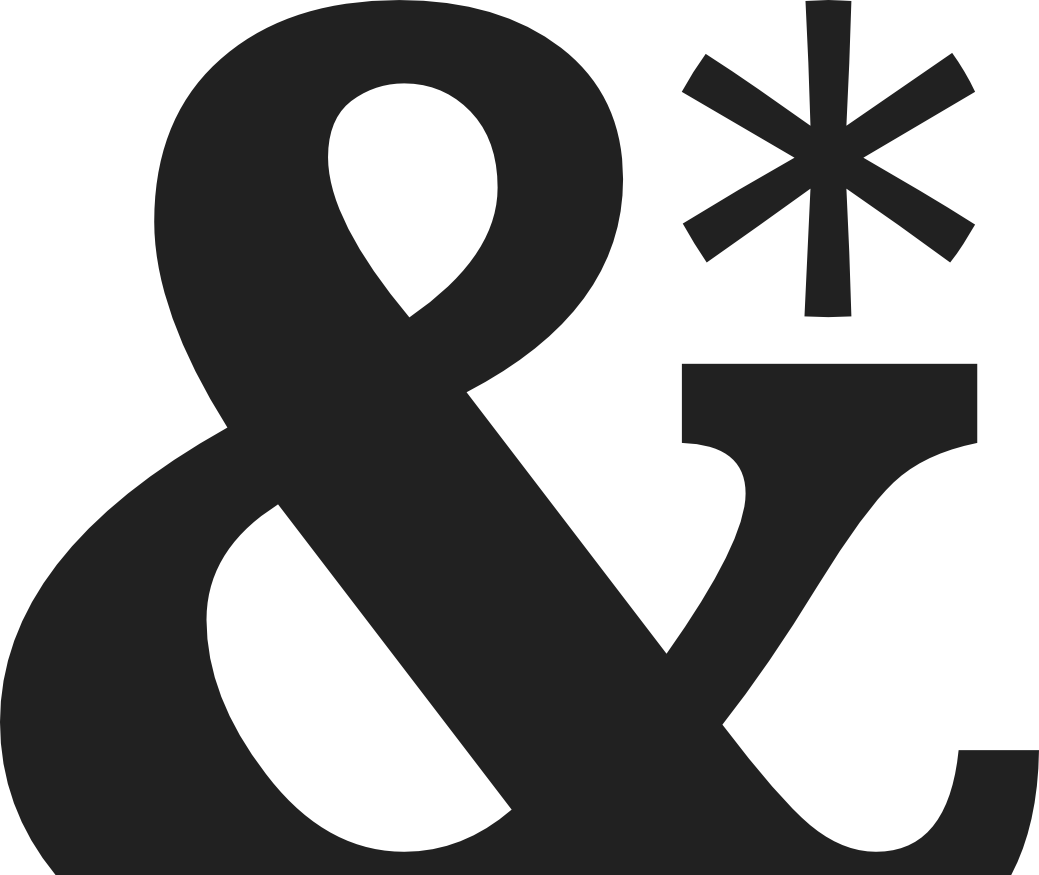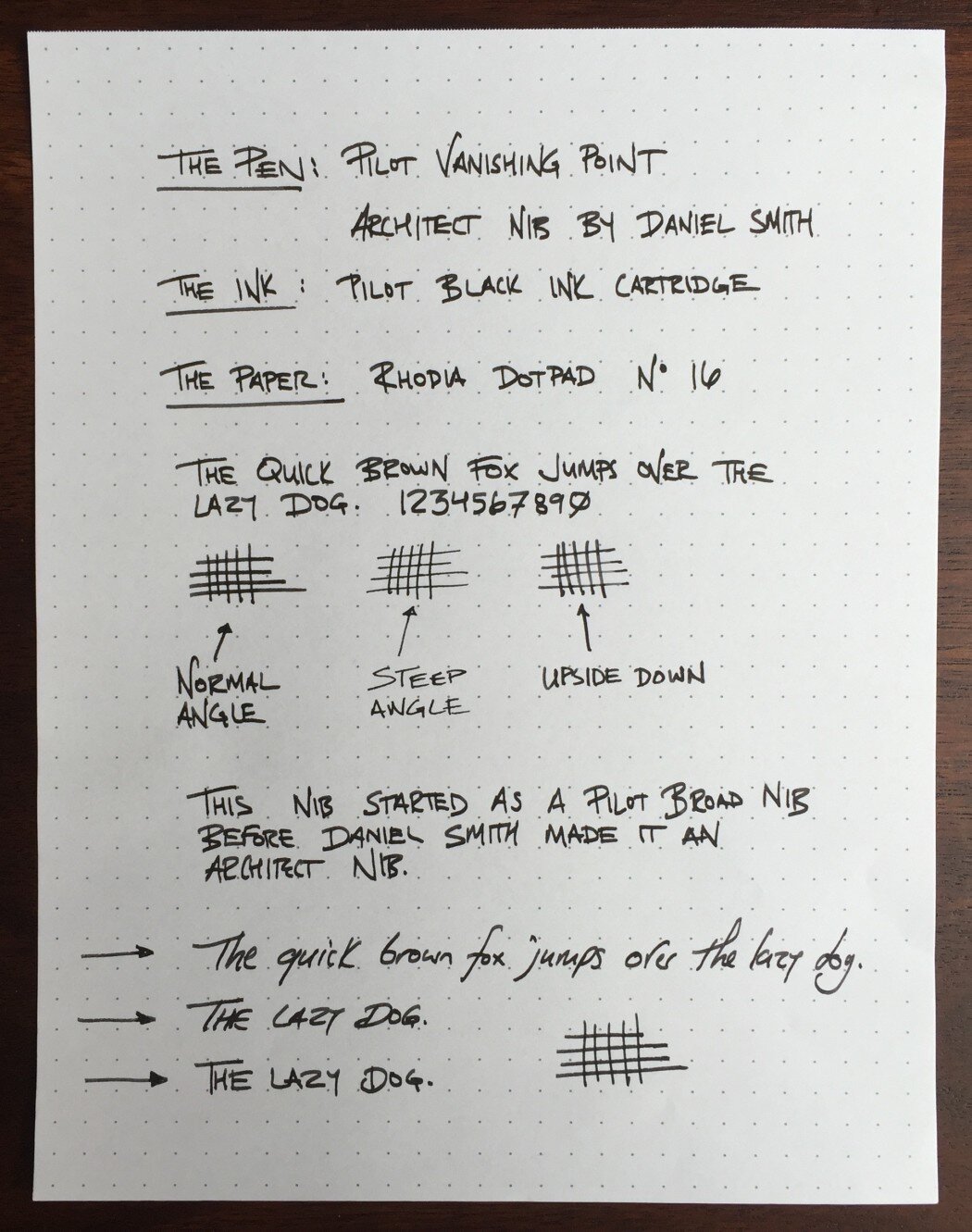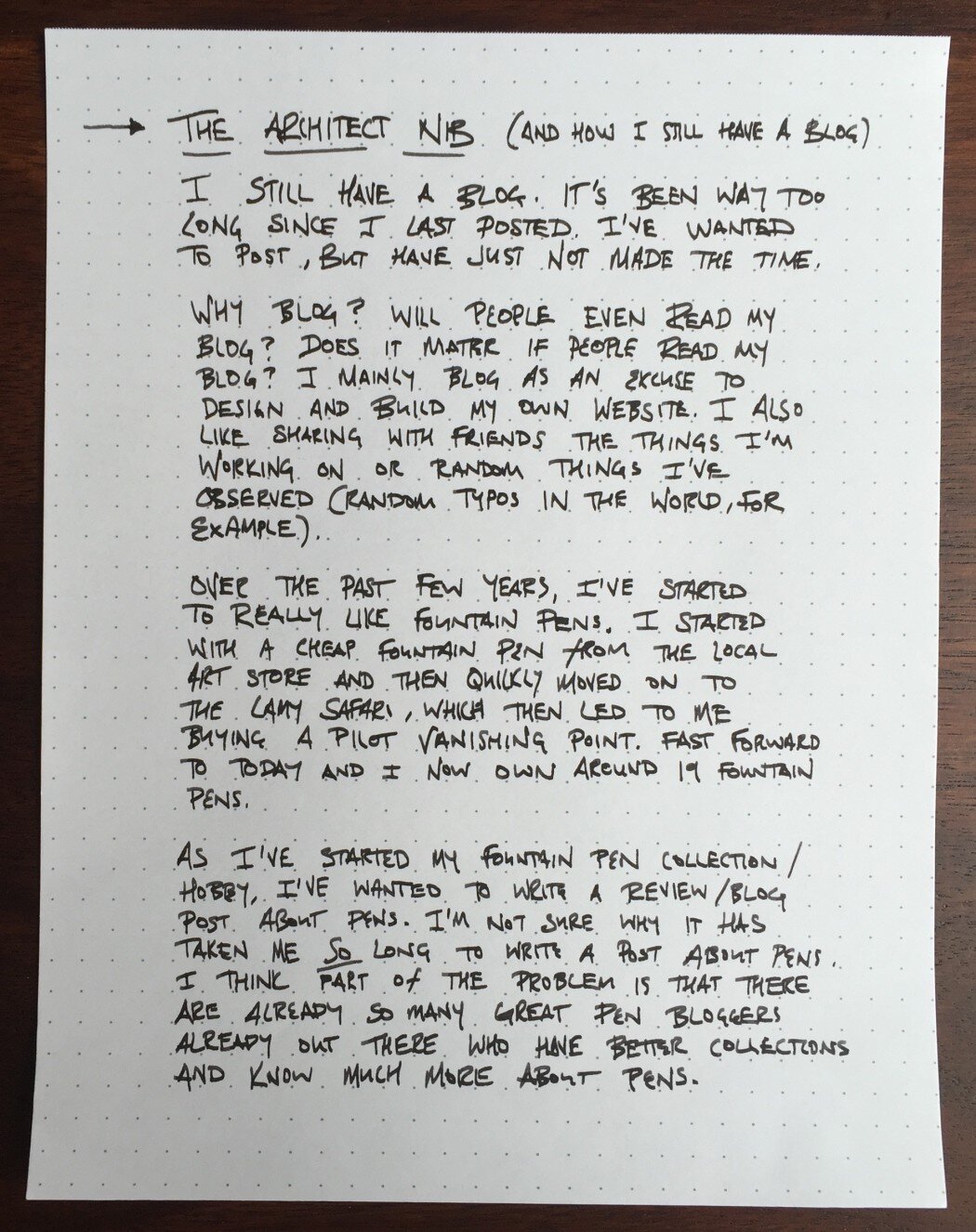The Architect Nib (and how I still have a blog)
I still have a blog. It’s been way too long since I last posted. I’ve wanted to post, but have just not made the time.
Why blog? Will people even read my blog? Does it matter if people read my blog? I mainly blog as an excuse to design and build my own website. I also like sharing with friends the things I’m working on or random things I’ve observed (random typos in the world, for example).
Over the past few years, I’ve started to really like fountain pans. I started with a cheap fountain pen from the local art store and then quickly moved on to the Lamy Safari, which then led to me buying a Pilot Vanishing Point. Fast forward to today and I now own around 19 fountain pens.
As I’ve started my fountain pen collection / hobby, I’ve wanted to write a review / blog post about pens. I’m not sure why it has taken me so long to write a post about pens. I think part of the problem is that there are already so many great pen bloggers already out there who have better collections and know much more about pens.
OK. Enough excuses / prologue.
Now to the main point of this post:
The Architect Nib
I’ve mainly used Japanese fine fountain pen nibs and decided it was time to try a different kind of nib. I’ve heard a lot about the architect grind nib and thought it would be fun to try.
I found a great deal on Amazon for a Pilot Vanishing Point with a broad nib. I thought the Vanishing Point would work best since I could just replace the nib unit if I didn’t like it.
What is an architect nib? Basically it is a nib that has thin vertical strokes and thick horizontal strokes.
After reading the review on clickypost.com about the architect nib work by Daniel Smith, I decided to send my pen to Daniel Smith.
I am really enjoying how the architect nib writes! It’s bolder than I’m used to, but I think the line variation adds a lot of character to my writing.
The whole process was pretty easy:
-
Bought the pen and made sure it worked
-
Emailed Daniel Smith about the architect nib work I wanted
-
Shipped Daniel Smith my pen
-
He emailed scans of writing samples so I could see progress of the work
-
He made a few adjustments since I thought the first writing sample was too bold for me
-
He then suggested I try the pen
Again, the pen, at first, seemed too bold for me, but the more I use the pen, the more fun it is to write with. Daniel Smith was very kind and patient with all my emails where I was going back and forth on how wide the nib should be. The quality of his work is also great. The nib is very smooth, which is a bit shocking for this kind of custom nib grind. I would definitely recommend Daniel Smith and would send more pens to him for custom grinds / tuning.
The cost of the architect nib was $55, plus shipping. I know that could seem like a lot for a pen, but I’ve enjoyed the pen so far. There are more expensive hobbies. That’s what I tell myself.
Note: Below are some writing samples (including this blog post as it originally existed: a hand written blog post). Part of me doesn’t want to share the blog post that I wrote by hand since it’s not my neatest handwriting example, but I figured this would be a good way for people to see what the architect nib looks like in practice.





